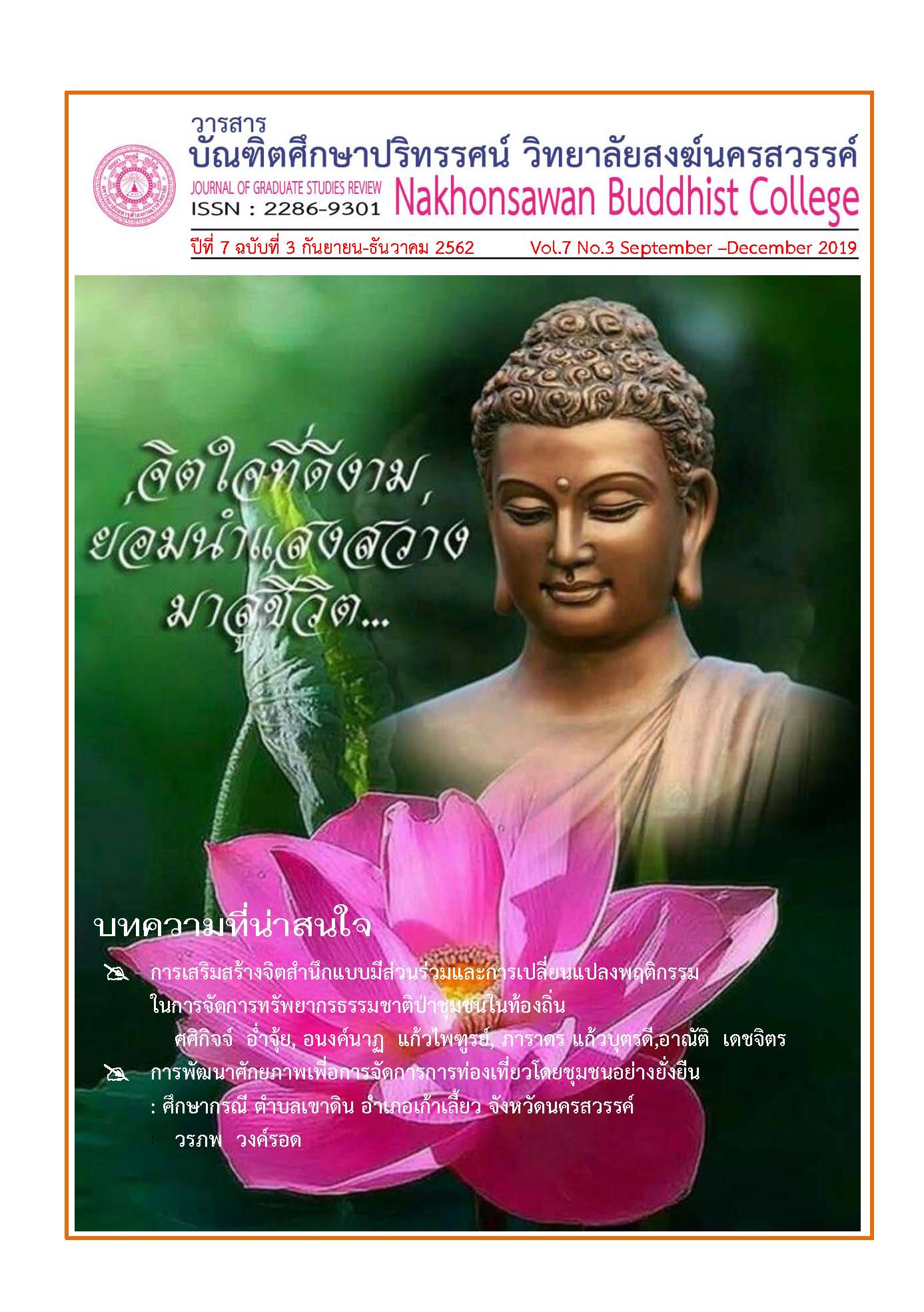รูปแบบการบริหารชุมชนแห่งการเรียนรู้วิชาชีพในโรงเรียนขยายโอกาสทางการศึกษา สังกัดสำนักงานคณะกรรมการการศึกษาขั้นพื้นฐาน
Main Article Content
บทคัดย่อ
การวิจัยครั้งนี้มีวัตถุประสงค์เพื่อ 1) ศึกษาองค์ประกอบของการบริหารชุมชนแห่ง
การเรียนรู้วิชาชีพในโรงเรียนขยายโอกาสทางการศึกษา สังกัดสำนักงานคณะกรรมการการศึกษา
ขั้นพื้นฐาน 2) สร้างรูปแบบการบริหารชุมชนแห่งการเรียนรู้วิชาชีพในโรงเรียนขยายโอกาส
ทางการศึกษา สังกัดสำนักงานคณะกรรมการการศึกษาขั้นพื้นฐาน 3) ประเมินรูปแบบการบริหารชุมชนแห่งการเรียนรู้วิชาชีพในโรงเรียนขยายโอกาสทางการศึกษา สังกัดสำนักงานคณะกรรมการการศึกษาขั้นพื้นฐาน มีระเบียบวิธีวิจัย ดังนี้ ขั้นตอนที่ 1 ศึกษาองค์ประกอบของการบริหารชุมชนแห่งการเรียนรู้วิชาชีพในโรงเรียนขยายโอกาสทางการศึกษาฯ โดยศึกษาจากเอกสาร การสัมภาษณ์ผู้ทรงคุณวุฒิ 9 คน และเก็บข้อมูลจากกลุ่มตัวอย่าง 364 โรงเรียน จำนวน 728 คน
จากแบบสอบถาม ขั้นตอนที่ 2 การสร้างรูปแบบการบริหารชุมชนแห่งการเรียนรู้วิชาชีพในโรงเรียนขยายโอกาสทางการศึกษาฯ โดยการสัมมนาอิงผู้เชี่ยวชาญ จำนวน 9 คน ขั้นตอนที่ 3 การประเมินรูปแบบการบริหารชุมชนแห่งการเรียนรู้วิชาชีพในโรงเรียนขยายโอกาสทางการศึกษาฯ โดยเก็บข้อมูลจากผู้บริหารสถานศึกษาขั้นพื้นฐาน จำนวน 9 คน
ผลการวิจัยพบว่า
- องค์ประกอบของการบริหารชุมชนแห่งการเรียนรู้วิชาชีพในโรงเรียนขยายโอกาส
ทางการศึกษา สังกัดสำนักงานคณะกรรมการการศึกษาขั้นพื้นฐาน ประกอบด้วย 1) การสร้างวิสัยทัศน์ร่วม 2) การสร้างวัฒนธรรมองค์กร 3) การทำงานเป็นทีม 4) การสร้างความร่วมมือ และ 5) ผู้บริหารมืออาชีพ - รูปแบบการบริหารชุมชนแห่งการเรียนรู้วิชาชีพในโรงเรียนขยายโอกาสทางการศึกษาฯประกอบด้วย 3 ส่วน ได้แก่ ส่วนที่ 1 ส่วนนำ ส่วนที่ 2 ส่วนเนื้อหา ส่วนที่ 3 ส่วนการนำไปใช้
- ผลการประเมินรูปแบบการบริหารชุมชนแห่งการเรียนรู้วิชาชีพในโรงเรียนขยายโอกาสทางการศึกษาฯ ในภาพรวมด้านความถูกต้อง ความเหมาะสม ความเป็นไปได้อยู่ในระดับมากที่สุด
และด้านความเป็นประโยชน์อยู่ในระดับมาก


